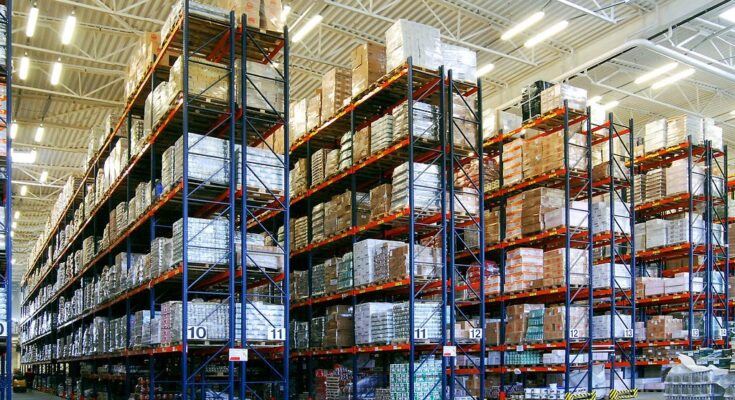As your industrial business grows, so does your need for storage solutions. Whether you’re storing raw materials, finished goods, or equipment, industrial pallet racking can provide an efficient and cost-effective solution for your storage needs. But with so many different types of industrial pallet racking available, it can be challenging to determine which one is right for you. In this article, we’ll explore the different types of industrial pallet racking and their unique benefits and drawbacks.
Selective Pallet Racking
Selective pallet racking is the most common type of industrial pallet racking system. It’s designed to allow easy access to every pallet in the system, making it ideal for businesses that store a large number of SKUs. Selective pallet racking can be configured to hold various load sizes and can accommodate single-deep, double-deep, or even triple-deep storage.
One of the primary benefits of selective pallet racking is its versatility. It can be adjusted to fit virtually any warehouse layout or product size. Additionally, selective pallet racking is relatively easy to install and requires minimal maintenance.
Drive-In Pallet Racking
Drive-in pallet racking is designed to maximize storage capacity by minimizing aisle space. Unlike selective pallet racking, drive-in racking only requires one aisle for access, which means you can store more pallets per square foot of floor space. This makes it ideal for businesses that need to store large quantities of the same SKU.
The drawback of drive-in racking is that it’s not as flexible as selective pallet racking. Because you’re storing pallets in rows, you need to have enough of the same SKU to fill each row. Additionally, because forklifts drive into the racking system, there’s a higher risk of damage to the racking if operators aren’t careful.
Push-Back Pallet Racking
Push-back pallet racking is a high-density storage system that uses a series of nested carts to store pallets. When a new pallet is loaded onto the system, it pushes the existing pallets back, creating a continuous flow of product. This type of racking is ideal for businesses that need to store large quantities of the same SKU, as it provides easy access to each pallet.
The primary benefit of push-back racking is that it’s highly efficient. Because the system uses gravity to move pallets, it requires minimal maintenance and can provide a higher storage density than selective pallet racking. However, push-back racking can be more expensive than other types of racking systems, and it’s not as versatile as selective pallet racking.
Cantilever Pallet Racking
Cantilever pallet racking is a unique type of industrial pallet racking system that’s designed to store long, bulky items like lumber, pipes, and tubing. Instead of using a series of beams to support pallets, cantilever racking uses a series of arms that extend from a single vertical column. This allows for easy access to each product, and it eliminates the need for obtrusive vertical support beams.
The primary benefit of cantilever racking is its versatility. Because it’s designed to store long, bulky items, it can be used in a wide range of industrial applications. Additionally, because the arms can be adjusted to fit different product sizes, it can accommodate a wide range of product SKUs.
Factors to Consider When Choosing Industrial Pallet Racking
Choosing the right type of industrial pallet racking is crucial for optimizing your warehouse space and ensuring the safety of your employees. Here are some key factors to consider when selecting pallet racking:
-
Weight capacity: Make sure the racking system you choose can support the weight of your products and materials. Consider the maximum load capacity of each beam level and the overall weight capacity of the system.
-
Size and shape of products: The dimensions and shape of your products will determine the width, depth, and height of the racking you need. Consider whether you will be storing pallets, boxes, barrels, or other types of items, and choose a racking system that can accommodate them.
-
Accessibility: Think about how often you will need to access your products and how quickly you need to retrieve them. Some types of racking, such as selective racking, allow for easy access to each pallet, while others, such as drive-in racking, require more time to retrieve specific products.
-
Floor space: Consider the available floor space in your warehouse and how much of it you want to allocate to your racking system. Some types of racking, such as pushback racking, require less floor space than others, such as double-deep racking.
-
Budget: Finally, consider the cost of the racking system and whether it fits within your budget. Remember that the initial cost is just one factor to consider – you should also think about the long-term maintenance and replacement costs.
Conclusion
Choosing the right type of industrial pallet racking is crucial for optimizing your warehouse space and ensuring safe and efficient storage of your goods. It’s important to consider factors such as your inventory needs, the size and weight of your products, and the layout of your warehouse when selecting a racking system.
Whether you opt for selective, push-back, drive-in, or another type of pallet racking, it’s essential to work with a reliable and experienced supplier like Camara Industries to ensure that you’re getting the best quality products and service.
With over 30 years of experience in the industry, Camara Industries offers a wide range of industrial steel shelving and pallet racking solutions to meet the needs of businesses of all sizes.



